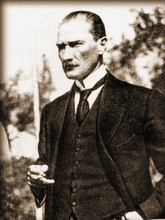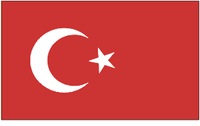My textbook says "To turn İngilizsiniz (you are English) into a question, follow these steps:"
| Step | Example |
| Take the statement | İngilizsiniz |
| Separate the to be ending from the noun or adjective | İngiliz siniz |
| Put mi in front of the ending. | İngiliz misiniz |
Using mi to form a question echoes an earlier post.
| English | Statement | Question |
| I am beautiful. | Güzelim. | Güzel miyim? |
| You're blind. | Körsün. | Kör müsün? |
| It's difficult. | Zor. | Zor mu? |
| We're ready. | Hazırız. | Hazır mıyız? |
| You're open. | Açıksınız. | Açık mısınız? |
| They're Turkish. | Onlar Türk. | Onlar Türk mü? |


2 comments:
The question particle (mi, mu, etc.) is cool. You put it right after the thing you're asking about. So for example:
Meltem Türk mü? = Is Meltem Turkish?
Meltem mi Türk? = Is it Meltem who's Turkish?
Question particle: a neat summation of the mi, mu, etc. concept. Thank you!
I don't recall seeing that mentioned in the particular workbook I'm using at the moment. However, this underscores a point my workbook makes — that is, don't let this workbook be your last. Let it be one of some others; the idea being to glean something from each author or set of authors.
My computer language studies work much the same way.
Teşekkürler tekrar!
Post a Comment